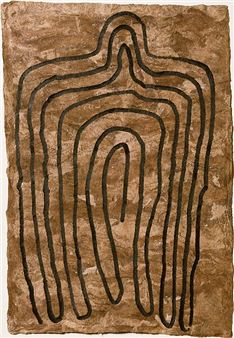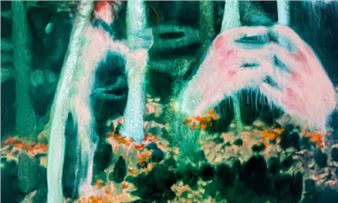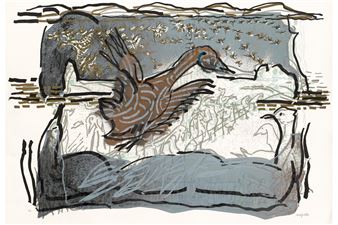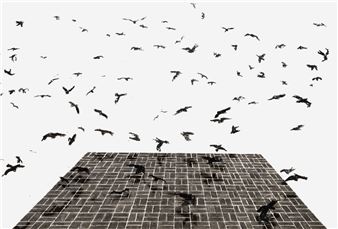Life Size: 20th anniversary group exhibition
An artwork鈥檚 scale is always a determining factor in the way it is being perceived. Miniature, for example, by reducing a real or fictitious universe, attracts the eye and creates a sense of physical distance. It forces the viewer to get closer and devote attention to perceive the subtleties of its scaled-down structure.
New technological modes also allow a great number of artists to produce monumental works. On a spatial level, the relation that these works of art command from the viewer is opposite to miniature. Often composed of simple elements, large-scale works require distance to be seen and appreciated. We regularly find them in the public realm and they often appear beyond one鈥檚 grasp. They cannot be perceived in full as they are made to interact with their immediate environment.
How about life-size works of art, one might ask. The relation between the work and the viewer is indefinite when it comes to a one to one ratio. Rarely does one question the status of a miniature or of a large-scale piece of art. However, this is often the case for the life-size format. The initial reflex is to question the classification of the object: is this a work of art or just another banal object, an animal, a real person? At times, the verisimilitude of a work creates discomfort: how to act in front such an uncanny object? The impressions that arise from this encounter are similar to ones we experience in other spheres of our lives, this is precisely the source of the discomfort.
That spatial relation that binds the piece to its viewer is at the center of the artistic experience that the life-size format produces. It is as if the viewer entered a painting to become an element among the composition. This is what this exhibition, titled Grandeur nature / Life Size pushes forward. For this 20th anniversary special exhibition, we transformed the space of our gallery into a large tableau in which viewers are invited to wander. Within this composition, some elements will remain inert. This is our invitation to discover the emotive potential of living with art.

Recommended for you
An artwork鈥檚 scale is always a determining factor in the way it is being perceived. Miniature, for example, by reducing a real or fictitious universe, attracts the eye and creates a sense of physical distance. It forces the viewer to get closer and devote attention to perceive the subtleties of its scaled-down structure.
New technological modes also allow a great number of artists to produce monumental works. On a spatial level, the relation that these works of art command from the viewer is opposite to miniature. Often composed of simple elements, large-scale works require distance to be seen and appreciated. We regularly find them in the public realm and they often appear beyond one鈥檚 grasp. They cannot be perceived in full as they are made to interact with their immediate environment.
How about life-size works of art, one might ask. The relation between the work and the viewer is indefinite when it comes to a one to one ratio. Rarely does one question the status of a miniature or of a large-scale piece of art. However, this is often the case for the life-size format. The initial reflex is to question the classification of the object: is this a work of art or just another banal object, an animal, a real person? At times, the verisimilitude of a work creates discomfort: how to act in front such an uncanny object? The impressions that arise from this encounter are similar to ones we experience in other spheres of our lives, this is precisely the source of the discomfort.
That spatial relation that binds the piece to its viewer is at the center of the artistic experience that the life-size format produces. It is as if the viewer entered a painting to become an element among the composition. This is what this exhibition, titled Grandeur nature / Life Size pushes forward. For this 20th anniversary special exhibition, we transformed the space of our gallery into a large tableau in which viewers are invited to wander. Within this composition, some elements will remain inert. This is our invitation to discover the emotive potential of living with art.
Artists on show
- Bevan Ramsay
- Brandon Vickerd
- Cal Lane
- Caroline Cloutier
- Clint Neufeld
- David Spriggs
- Emily Jan
- Eric Lamontagne
- Guillaume Lachapelle
- Ingrid Bachmann
- Jannick Deslauriers
- Jean-Robert Drouillard
- Jerrod Galanin
- Karine Payette
- Laurent Lamarche
- Leonard Getinthecar
- Lucy Howe
- Nadia Myre
- Nep Sidhu
- Nicholas Galanin
- Patrick Beaulieu
- Patrick Bérubé
- Pierre Ayot
- Pierre Etienne Masse
- Rebecca Belmore
- Renato Garza Cervera
- Robbie Cornelissen
- Sarah Garzoni
- Simon Bilodeau
- Zeke Moores

 ARTISTS
ARTISTS
















